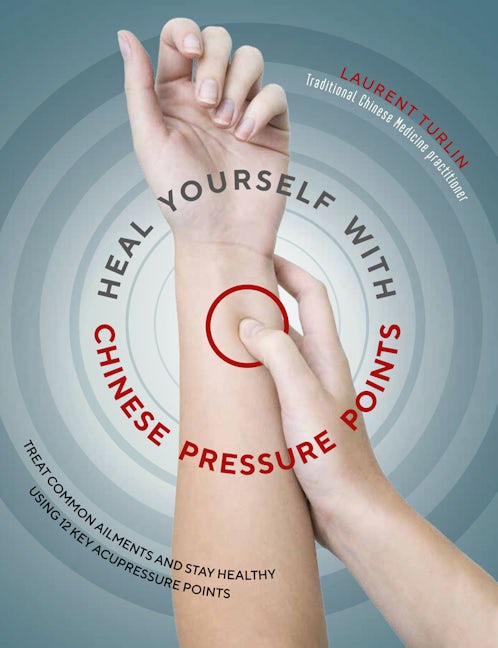An Introduction to Acupressure
Acupressure is an ancient healing art that uses the fingers (one’s own or someone else’s) to press key balancing points, which stimulate the body’s natural self-curative abilities. Using the power and sensitivity of the hand, acupressure therapy is effective in the relief of stress-related ailments and is ideal for self-treatment and preventive health care because it boosts the immune system. Acupressure releases tension, increases circulation, reduces pain, and develops spirituality and vibrant health.
What is the history of acupressure?
Acupressure was developed in Asia more than 5,000 years ago. It is a system developed to activate life force energy, which in China is called qi or chi. In Japan, the life force is termed Ki, and the practice of channeling healing energy is called Reiki. In yoga practices, the body’s life force is referred to as prana or pranic energy. These terms all relate to the same universal healing energy that exists in our environment and links us to all forms of life.
How does acupressure work?
Acupressure uses the same pressure points and meridians as acupuncture. The key difference is that acupuncture activates these points using needles, while acupressure uses gentle to firm finger pressure. When acupressure points are stimulated, they release muscular tension, promote circulation of blood, and enhance the body’s life force energy to aid healing.
Traditional Chinese Medicine looks at the body’s healing energy system as a system of twelve meridians. Acupuncture and acupressure can move this life energy through the meridians to improve flow and balance. As healing energy flows through the meridians, it governs blood circulation and harmonizes all functions of the body. Studying the meridians pathways for transmitting qi healing energy is key to all transformational energy work.
Acupressure and acupuncture charts show where the meridian lines are on the body. The specific points we focus on in acupressure and acupuncture are where vital energy gets blocked on the meridians, and where you can most effectively release the resulting tension, numbness, or pain. Acupressure points have a high electrical conductivity at the surface of the skin, and thus conduct and channel healing energy most effectively. This is why the most potent healing energy work uses acupressure points.
What are the benefits of acupressure?
Energy flow governs well-being in people and animals alike. Within all living animals are meridian pathways. These life-force channels govern the functions of all body systems, such as the nervous, digestive, endocrine, vascular, lymphatic, and reproductive systems. The way energy flows through the meridians presides over wellness or dis-ease. Meridian blockages can cause all kinds of human suffering. However, when the life force flows through the meridians in a balanced way, health, harmony, and happiness result.
Energy blockages—whether from stress, trauma, or an injury—can be traced to the root of most health problems. Your energy flow affects how you feel, how you think, and how you breathe. Just as negative thoughts can block your energy flow, positive thoughts can increase your healing energy. When the body’s life force energy becomes blocked, various emotional imbalances and physical symptoms also result. These energy blockages occur at the acupressure points. Through a variety of acupressure methods, ranging from light touch to tapping to simply holding the points, the body’s life energy is able to flow and rebalance.
Are there multiple acupressure methods?
All acupressure massage techniques, methods, and styles use the same ancient acupressure points or trigger points. They vary in use of different rhythms and pressures for stimulating the acupressure points. Some use not only the fingers, but also the hands, arms, legs, and even feet to stimulate these points. Some styles also incorporate other healing techniques.
What are some of the main schools of acupressure?
- Shiatsu, the traditional Japanese form of acupressure, can be quite vigorous, with deep pressure applied to each point for three to five seconds. There are many different forms of Shiatsu: Zen, Barefoot, Namikoshi, Kiatsu, and more.
- In Jin Shin acupressure, at least two points are gently held for a minute or more. This style also uses the Extra Meridians or Extraordinary Vessels, which travel throughout the body and function to balance the meridians. There are many Jin Shin styles.
- Tuina Chinese massage and Thai massage stimulate the qi (“key”) healing energy using acupressure hand movements, full body stretches, and Chinese massage techniques.
What kinds of issues can acupressure address?
- Common Ailments: Acupressure points are used for relieving common complaints such as insomnia or tension headaches. If these headaches are caused by a conflict at work or an argument over homework with one’s teenager, the session may bring old conflicts or memories to the surface. Work gently with the emotions.
- Emotional Healing: Emotional imbalances and the physical symptoms that accompany them are often the body’s response to unresolved issues and events. Someone who witnessed a fatal automobile accident or an abusive incident may, for instance, live with the memory in the form of recurring nightmares and insomnia or other psychosomatic ailments. If left unresolved, they can continue for years. Acupressure along with slow, deep breathing, skilled guidance, and counseling can help a person get to the source of these deep imbalances and support emotional healing.
- Stress Relief and Trauma: Acupressure relaxes the tight muscles that result from stress and trauma, which can cause the body to contract its muscles. For instance, when you are in a stressful situation or something frightens you, your neck and shoulders may tighten immediately in response. Acupressure self-care and for others can relieve physical ailments, muscular tension, and many common complaints without the use of drugs and their side effects.
- From Pain Relief to Wellness: Acupressure therapy can be used to relieve pain, fortify the sexual reproductive system, detoxify the body for greater health and beauty, and provide muscle tone.
About the Author
Michael Reed Gach, PhD, author and international expert on Acupressure Therapy, created three online Acupressure Training Programs: AcupressureMastery.com (covering sixty major points), the comprehensive Acupressure Training Circle, and his self-care course, which includes fifty self-care routines. For more information, see his website: Acupressure.com.
You Might Also Like Our Content on These Topics: Acupuncture, Chiropractic, Energy Balancing, Energy Healing











